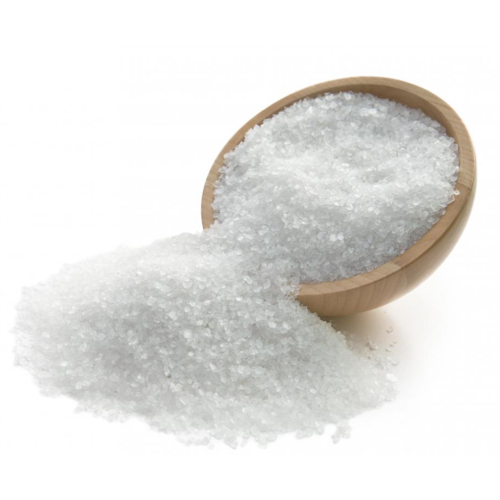
Anhydrous Aluminum Chloride
780.00 - 950.00 USD ($)/Ton
Product Details:
X
Anhydrous Aluminum Chloride Price and Quantity
- 780.00 - 950.00 USD ($)/Ton
- 20 Ton
Anhydrous Aluminum Chloride Trade Information
- 25-30 Days
Product Description
Anhydrous Aluminum Chloride is a chemical compound having a chemical formula of AlCl3 with a molar mass of 133.34 grams per mol. This white to yellow colored chemical is highly reactive and hygroscopic which makes it capable to absorb moisture from the air. It is available in purest form with purity of up to 100 percent. It can be used as a catalyst in the production of a variety of chemicals which include petroleum products, plastics, and pharmaceuticals. It is also demanding in textile industries as a mordant to fix dyes to fabrics. Customers can get this industrial substance at a low price.
Anhydrous Aluminum Chloride Properties:
1. Physical State: Anhydrous aluminum chloride is typically found as a white or pale yellow crystalline solid.
2. Odor: It has a pungent and strong odor, resembling that of hydrogen chloride gas.
3. Melting and Boiling Points: The melting point of anhydrous aluminum chloride is around 192.4 degree centigrade, and it sublimes (turns directly from a solid to a gas) at higher temperatures. The boiling point is approximately 180.8 degree centigrade under atmospheric pressure.
4. Solubility: Anhydrous aluminum chloride is highly soluble in certain polar solvents like benzene, carbon tetrachloride, and chlorinated hydrocarbons. However, it reacts violently with water, hydrolyzing to form hydrogen chloride gas and aluminum hydroxide. This is an exothermic reaction, meaning it releases heat.
5. Hygroscopic: Anhydrous aluminum chloride is hygroscopic, meaning it readily absorbs moisture from the air, which is why it reacts violently with water.
6. Lewis Acid: One of its most significant properties is its role as a strong Lewis acid. It can accept electron pairs from Lewis bases, making it a powerful catalyst in numerous chemical reactions, particularly in Friedel-Crafts reactions involving aromatic compounds.
7. Corrosive: Anhydrous aluminum chloride is corrosive and can cause burns on contact with the skin, eyes, and respiratory tract. Proper handling and safety precautions are essential.
8. Reactivity: Anhydrous aluminum chloride is highly reactive and can react with various organic compounds, particularly those containing electron-rich centers, due to its Lewis acid behavior.
9. Applications: It is used extensively as a catalyst in organic synthesis, particularly in the production of various aromatic compounds, such as pharmaceuticals, dyes, and perfumes, through Friedel-Crafts reactions. It's also used in the production of aluminum metal via the Hall-Heroult process.
10. Packaging and Storage: Due to its reactivity with air and moisture, anhydrous aluminum chloride is typically stored and transported in air-tight containers under dry and inert conditions.
Applications of Anhydrous Aluminum Chloride:
1. Friedel-Crafts Reactions: Anhydrous aluminum chloride is widely used as a catalyst in Friedel-Crafts reactions, which involve the acylation and alkylation of aromatic compounds. These reactions are essential in the synthesis of pharmaceuticals, fragrances, flavors, dyes, and other specialty chemicals.
2. Production of Aromatic Compounds: It plays a crucial role in the synthesis of a wide range of aromatic compounds, such as toluene, xylene, cumene, and ethylbenzene. These compounds are important precursors for various industrial products.
3. Pharmaceutical Industry: Anhydrous aluminum chloride is used in the synthesis of many pharmaceutical intermediates and active pharmaceutical ingredients (APIs). It helps in creating complex molecular structures that are important for drug development.
4. Petroleum and Petrochemicals: It is used in the alkylation of hydrocarbons in petroleum refining processes, aiding in the production of high-octane gasoline.
5. Rubber and Plastics: Anhydrous aluminum chloride is utilized in the production of synthetic rubber and plastics, playing a role in polymerization reactions.
6. Dyes and Pigments: It is involved in the synthesis of various dyes and pigments used in the textile, paint, and coatings industries.
7. Perfumes and Fragrances: Anhydrous aluminum chloride is a key component in the production of fragrances and perfumes, as it helps in creating specific aromatic compounds.
8. Chemical Research: It serves as a versatile reagent in chemical research, enabling chemists to carry out various transformations and create novel compounds.
9. Electronics Industry: Anhydrous aluminum chloride is used in the production of semiconductors and as a dopant in the fabrication of electronic components.
10. Water Treatment: In certain cases, anhydrous aluminum chloride can be used as a coagulant in water treatment processes to help remove impurities and suspended particles.
FAQ:
Q. What is anhydrous aluminum chloride?
Ans: Anhydrous aluminum chloride (AlCl3) is a chemical compound composed of aluminum and chlorine atoms. It exists as a white or pale yellow crystalline solid and is a strong Lewis acid, widely used as a catalyst in various chemical reactions.
Q. What is the significance of its "anhydrous" nature?
Ans: "Anhydrous" means without water. Anhydrous aluminum chloride is the form of aluminum chloride that does not contain water molecules. The absence of water is important because anhydrous AlCl3 is highly reactive with water, undergoing hydrolysis and producing hydrogen chloride gas.
Q. What is its role as a catalyst?
Ans: Anhydrous aluminum chloride acts as a Lewis acid catalyst, meaning it can accept electron pairs from other molecules (Lewis bases). It is commonly used in Friedel-Crafts reactions to catalyze the acylation and alkylation of aromatic compounds, leading to the synthesis of various organic molecules, including pharmaceuticals, fragrances, and dyes.
Q. Is anhydrous aluminum chloride safe to handle?
Ans: Anhydrous aluminum chloride is highly reactive and corrosive. It can cause burns upon contact with skin, eyes, and mucous membranes. Proper safety precautions, including wearing appropriate protective equipment and working in a well-ventilated area, are essential when handling this compound.
Q. What are some common applications of anhydrous aluminum chloride?
Ans: Anhydrous aluminum chloride is used as a catalyst in various applications, including the production of aromatic compounds, pharmaceuticals, fragrances, dyes, and plastics. It is also used in the petroleum and petrochemical industries for hydrocarbon alkylation and in the synthesis of specialty chemicals.
Q. How does anhydrous aluminum chloride react with water?
Ans: Anhydrous aluminum chloride reacts violently with water, undergoing hydrolysis. The reaction produces hydrogen chloride gas (HCl) and aluminum hydroxide (Al(OH)3). The reaction is exothermic, releasing heat.
Q. How is anhydrous aluminum chloride stored and handled?
Ans: Anhydrous aluminum chloride should be stored in air-tight containers under dry and inert conditions to prevent moisture absorption. It should be handled with care, preferably in a controlled laboratory environment, using appropriate safety measures, such as wearing gloves, goggles, and a lab coat.
Q. Can anhydrous aluminum chloride be used in water treatment?
Ans: Anhydrous aluminum chloride can be used as a coagulant in water treatment processes to help remove impurities and suspended particles. However, its use in water treatment is regulated and requires careful consideration of its reactivity and potential environmental impact.
Q. Are there alternatives to anhydrous aluminum chloride as a catalyst?
Ans: Yes, there are other Lewis acids and catalysts that can be used in place of anhydrous aluminum chloride, depending on the specific reaction and desired outcomes. Some examples include boron trifluoride (BF3), zinc chloride (ZnCl2), and iron(III) chloride (FeCl3).
Q. What are the safety precautions when working with anhydrous aluminum chloride?
Ans: Safety precautions include wearing appropriate personal protective equipment (PPE), working in a well-ventilated area, avoiding contact with skin and eyes, and handling the compound under dry conditions. In case of contact, rinse affected areas with plenty of water and seek medical attention if necessary.
Enter Buying Requirement Details
Other Products in 'Inorganic Salt' category
 |
Chemtrade International Corporation
All Rights Reserved.(Terms of Use) Developed and Managed by Infocom Network Private Limited. |

 English
English Spanish
Spanish French
French German
German Italian
Italian Chinese (Simplified)
Chinese (Simplified) Japanese
Japanese Korean
Korean Arabic
Arabic Portuguese
Portuguese Call Me Free
Call Me Free Send SMS
Send SMS